Chatham Naval Memorial
One of the three great naval memorials built by the CWGC which commemorate the missing of the Royal Navy from the two world wars. Here at Chatham are named more than 18,500 service personnel who have no grave but the sea.
![]()
More than 45,000 men and women died while serving with the Royal Navy during the First World War. The majority were lost at sea and have no known grave, but the War Graves Commission were determined to find an appropriate way to commemorate them. When someone joined the Royal Navy they were allocated to a particular ‘manning port’ for administrative purposes. An Admiralty committee recommended that the three manning ports in Great Britain -- Plymouth, Chatham and Portsmouth -- should each have an identical memorial to bear the names of their naval personnel with no grave but the sea. These unmistakable obelisks would be seen by all vessels using these ports, keeping the dead in daily view. The Chatham Naval Memorial, unveiled in 1924, commemorates over 8,500 naval dead of the First World War.
Only fifteen years after this war memorial was unveiled, the Navy was called upon to fight another global war. Hundreds of thousands of men and women joined up, and manpower strength rose to over 860,000 by 1945. In all, almost 60,000 naval personnel died as a result of their service between 1939 and 1945. In 1946, it was decided to extend the existing naval memorials to commemorate Second World War dead. Unveiled in 1952, the Chatham extension records the names of over 10,000 men and women of the Commonwealth who died while serving in the Royal Navy.
Find out more
When war broke out in August 1914, Britain and her war effort depended on the strength of the Royal Navy. Over the course of the next four years, Royal Naval personnel from Britain and her Empire played an active and vital role in the Allied war effort and suffered significant casualties across the globe. They blockaded German shipping lanes and fought major naval actions off the coast of Chile and at the Falkland Islands in 1914, and in the North Sea in 1915 and 1916. The Royal Navy also provided the army with crucial support during the Dardanelles Campaign in 1915 and protected Allied troop transports and merchant shipping by escorting convoys throughout the war, facing a new weapon: U-boats with torpedoes.
More than 45,000 men and women died while serving with the Royal Navy during the First World War. The majority were lost at sea and have no known grave, but the War Graves Commission were determined to find an appropriate way to commemorate them. When someone joined the Royal Navy they were allocated to a particular ‘manning port’ for administrative purposes. An Admiralty committee recommended that the three manning ports in Great Britain -- Plymouth, Chatham and Portsmouth -- should each have an identical memorial to bear the names of their naval personnel with no grave but the sea. These unmistakable obelisks would be seen by all vessels using these ports, keeping the dead in daily view. The Chatham Naval Memorial, unveiled in 1924, commemorates over 8,500 naval dead of the First World War.

Crew members on the deck of HMS Mary Rose during the First World War. Sunk protecting a convoy 17.10.17, loss of 80, 66 on Chatham. © NMRN 2008/117
The German U-boat campaign began in early August 1914, with the Germans claiming their first victory when they torpedoed the British light cruiser, HMS Pathfinder, off the coast of Scotland on 5 September – the first ship in history to be sunk by a torpedo fired from a submarine. That month, U-boats claimed a further three British cruisers and the lives of almost two thousand men. Most of the dead of HMS Pathfinder, Aboukir, Cressy and Hogue are named on the Chatham Naval Memorial.
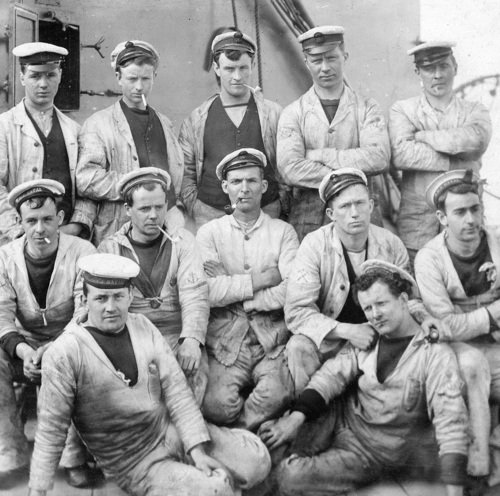
A team of stokers on the deck of HMS Natal, c. 1915. On 30 December 1915 she was moored at Cromarty and a party was taking place on board when the Natal suddenly blew up. 408 crew members were lost, 299 of whom are commemorated here. © NMRN 2011/60.4967
Only fifteen years after this memorial was unveiled, the Navy was called upon to fight another global war. Hundreds of thousands of men and women joined up, and manpower strength rose to over 860,000 by 1945. They served in a wide variety of roles and vessels, from converted fishing trawlers to submarines, immense battleships and aircraft carriers, and in shore establishments. Once again, the navy protected vital convoys of food, supplies and Allied troops, and engaged the enemy at sea and submarine attacks claimed many more lives.
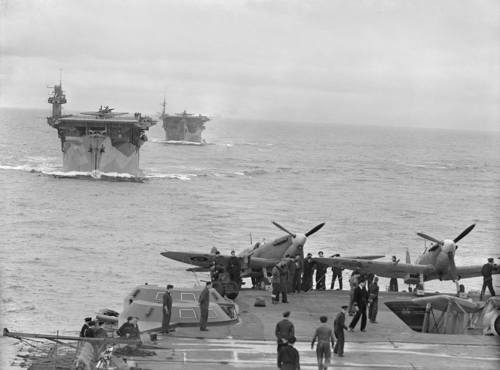
Supermarine Seafires on the deck of HMS Victorious with fellow aircraft carriers HMS Biter and HMS Avenger in the background, September 1942. In October-November 1942, Avenger helped to provide air cover for the assault force and landings in North Africa. On 15 November the ship was sunk just west of Gibraltar by a U-boat with the loss of 516 men, 250 of whom are commemorated at Chatham. © . IWM A 12577.
From December 1941, British and Commonwealth naval ships faced Japanese ships and planes in the Indian and Pacific Oceans. During one such action, fought off the coast of Ceylon in April 1942, the Japanese sank two British cruisers, HMS Dorsetshire and Cornwall.
In all, almost 60,000 naval personnel died as a result of their service between 1939 and 1945. In 1946, it was decided to extend the existing naval memorials to commemorate Second World War dead. Unveiled in 1952, the Chatham extension records the names of over 10,000 men and women of the Commonwealth who died while serving in the Royal Navy, including most of HMS Cornwall’s 180 dead.
Over one-quarter of the Second World War personnel commemorated at Chatham lost their lives when their ships were attacked by U-boats. This includes eight ‘Wrens’ (members of the Woman’s Royal Naval Service (WRNS) who died when their transport ship was torpedoed en route to Gibraltar in August 1941, and another nine from SS Khedive Ismail, sunk off the Maldives on 12 February 1944.
Visit the Chatham Naval Memorial
The memorial overlooks the town of Chatham and is approached by a steep path from the Town Hall Gardens. By Car, access is along King’s Bastion Road, and there is parking near the memorial.
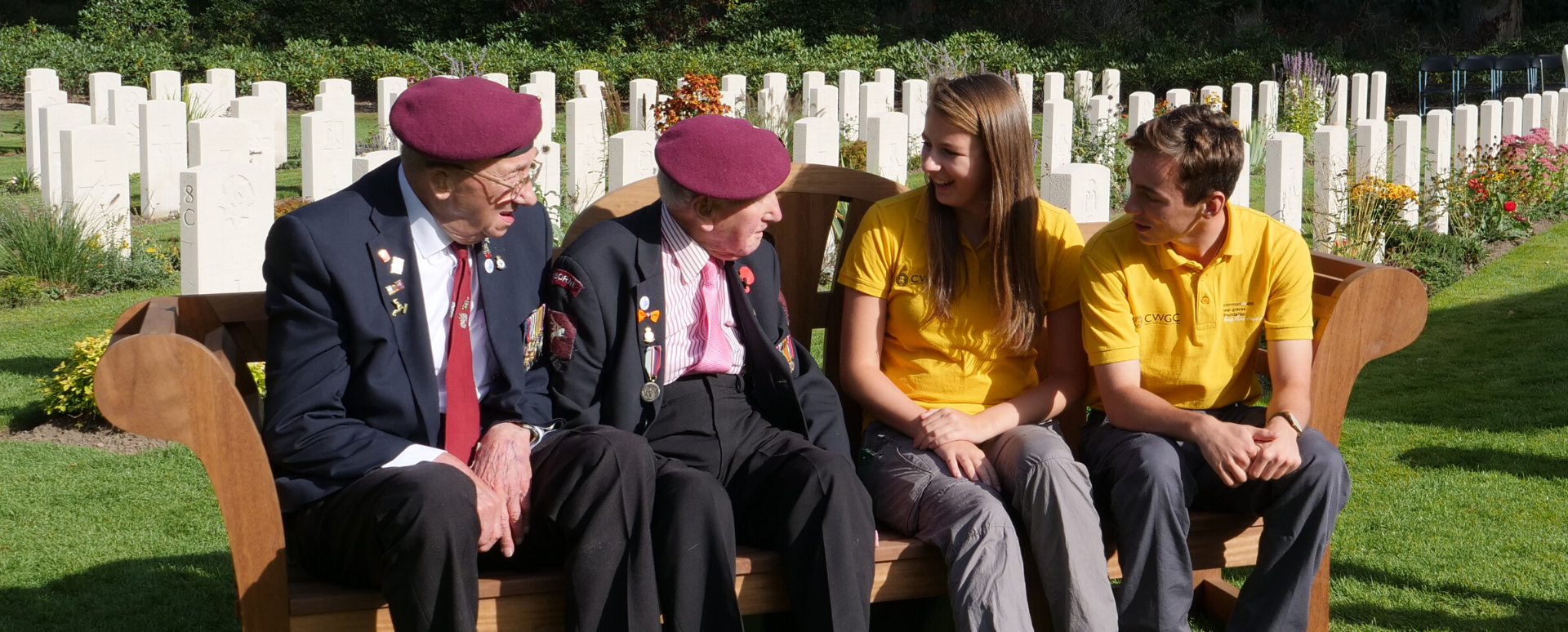
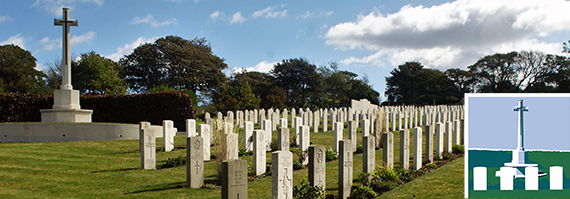
Located overlooking much of the City of Brighton, this cemetery is the final resting place of more than 400 First and Second World War service personnel.
Brighton City (Bear Road) Cemetery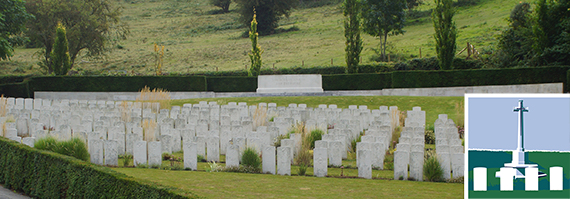
Throughout the First World War more than six million wounded servicemen were brought ashore at Dover, and during the Second World War the Dunkirk evacuations were coordinated from here.
Dover St James Cemetery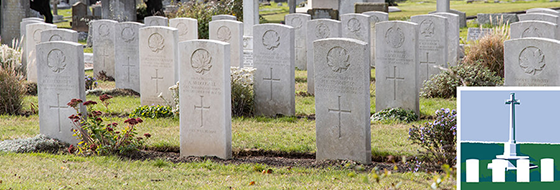
This seaside town has a surprisingly large number of war graves in its cemetery: we commemorate close to 280 servicemen here, most gathered together in plots and marked by the familiar CWGC headstone.
Seaford Cemetery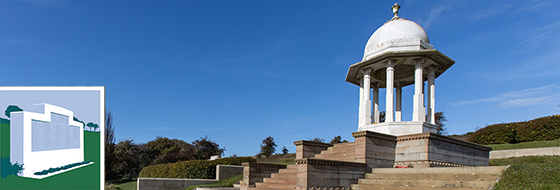
The contribution made by India during the First World War was vital to Allied success, but when imagining where their dead are commemorated, a corner of an English down might be surprising.
Patcham Down Indian Forces Cremation Memorial




